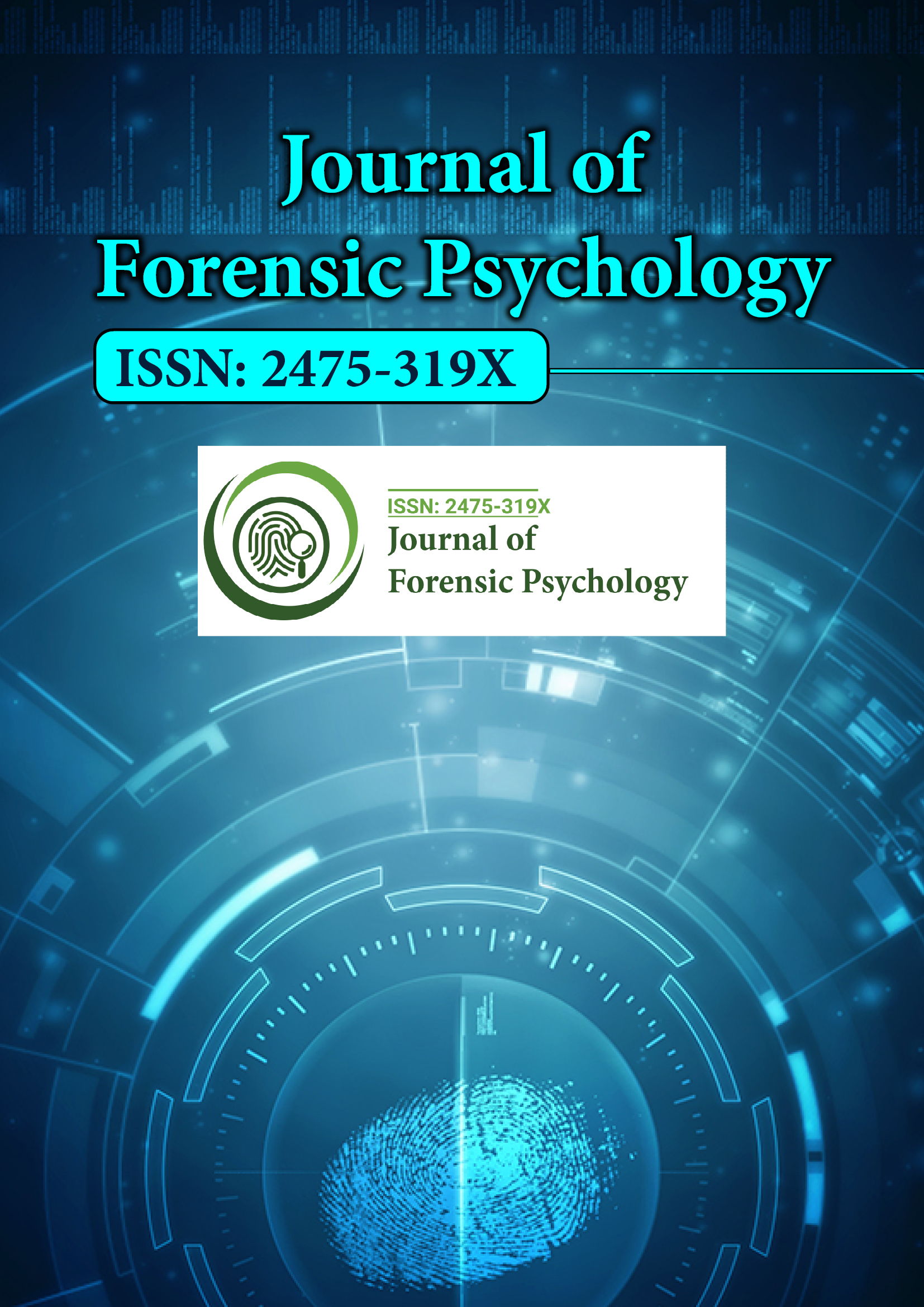Indexed In
- RefSeek
- Hamdard University
- EBSCO A-Z
- Publons
- Geneva Foundation for Medical Education and Research
- Euro Pub
- Google Scholar
Useful Links
Share This Page
Journal Flyer

Open Access Journals
- Agri and Aquaculture
- Biochemistry
- Bioinformatics & Systems Biology
- Business & Management
- Chemistry
- Clinical Sciences
- Engineering
- Food & Nutrition
- General Science
- Genetics & Molecular Biology
- Immunology & Microbiology
- Medical Sciences
- Neuroscience & Psychology
- Nursing & Health Care
- Pharmaceutical Sciences
Perspective - (2023) Volume 8, Issue 2
Plant DNA: A Powerful Tool in Forensic Investigations
Tirza Sznycer*Received: 01-Mar-2023, Manuscript No. JFPY-23-20375; Editor assigned: 03-Mar-2023, Pre QC No. JFPY-23-20375 (PQ); Reviewed: 17-Mar-2023, QC No. JFPY-23-20375; Revised: 24-Mar-2023, Manuscript No. JFPY-23-20375 (R); Published: 31-Mar-2023, DOI: 10.35248/2475-319X.23.8.275
Description
Human Deoxyribonucleic Acid (DNA) has been used extensively in forensics for applications such as paternity determination and human individual identification. Human DNA isn't always accessible, though. In this case, environmental DNA at the crime site must be used to focus the search for criminal suspects and ascertain the truth.
It's highly likely that a suspect may unintentionally remove environmental elements like soil, dust, water, etc. from his or her skin, shoes, clothes, hair, or even in the seams of their nails. The material the police can obtain in the majority of criminal cases is soil, which is typically tainted with plant pieces or pollen grains. Because it is widespread, stable, and has the right amount of variety, plant DNA is a great candidate for forensic source tracking. Plant DNA has a strong chance of offering unambiguous proof during criminal investigations. DNA met barcoding has lately been used to identify body dumping sites, homes of unidentified human remains, drowning sites, and to validate drowning suspicions. Due to three key difficulties, such applications are regrettably still quite uncommon. The first is the challenges associated in identifying plant species from ambient components using DNA. Despite the fact that the reference library for DNA barcoding is not very extensive, previous studies by BIOSCAN have improved the pool of DNA barcodes. Only a tiny fraction of flowering plant species-less than 5.0%-have matK or rbcL sequences stored in GenBank.
The second problem is that environmental DNA cannot be sequenced using the Sanger method since the amplicons are a mixture of many species. Environmental DNA metabarcoding requirements are addressed by Next-Generation Sequencing (NGS) technology, and a relatively simple data processing method is now accessible. Lack of a "perfect" DNA barcode for DNA metabarcoding is the final obstacle. A DNA barcode is a brief DNA sequence used to identify and distinguish between different species. Biotechnology tools like DNA barcoding are frequently employed in fields including forensics, environmental research, and biology. It is an effective molecular diagnostic technique for identifying specimens. One of the major themes for plant DNA barcoding over the past ten years has been finding the best DNA barcodes or creating new technological advancements. Plant group-specific DNA barcodes appear more practical because there isn't a single perfect DNA barcode that can identify all plant species. For instance, rbcL is a DNA barcode that is appropriate for lower plants since it is considerably less variable than ycf1 in flowering plants. Algae, rather than higher plants like mosses, ferns, and seed plants, are much more crucial in the investigation of crimes involving moist environments, and rbcL has been suggested as a DNA barcode for diatoms. RbcL is one of the few DNA barcodes for lower plants due to its substantially higher species coverage of existing sequences and universal PCR primers. Using DNA metabarcoding of diatoms using chloroplast rbcL gene segments, it can be shown how to use dirt taken from a criminal suspect's pants to identify the real offender in a murder case that occurred in China. The presence of the suspect at the crime site was clearly demonstrated by the diatom colonies in the mud.
Citation: Sznycer T (2023) Plant DNA: A Powerful Tool in Forensic Investigations. J Foren Psy. 8:275.
Copyright: © 2023 Sznycer T. This is an open-access article distributed under the terms of the Creative Commons Attribution License, which permits unrestricted use, distribution, and reproduction in any medium, provided the original author and source are credited.

